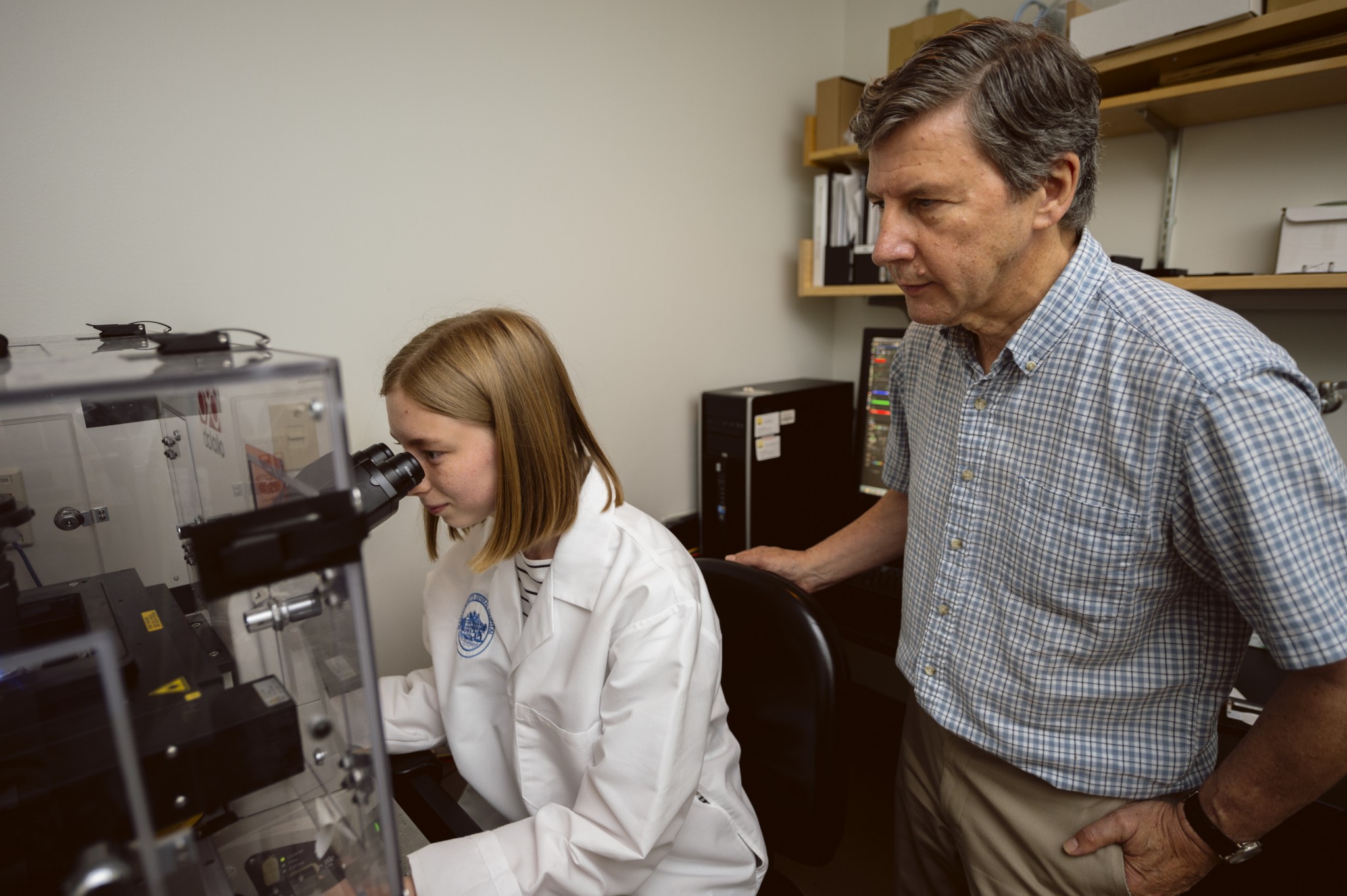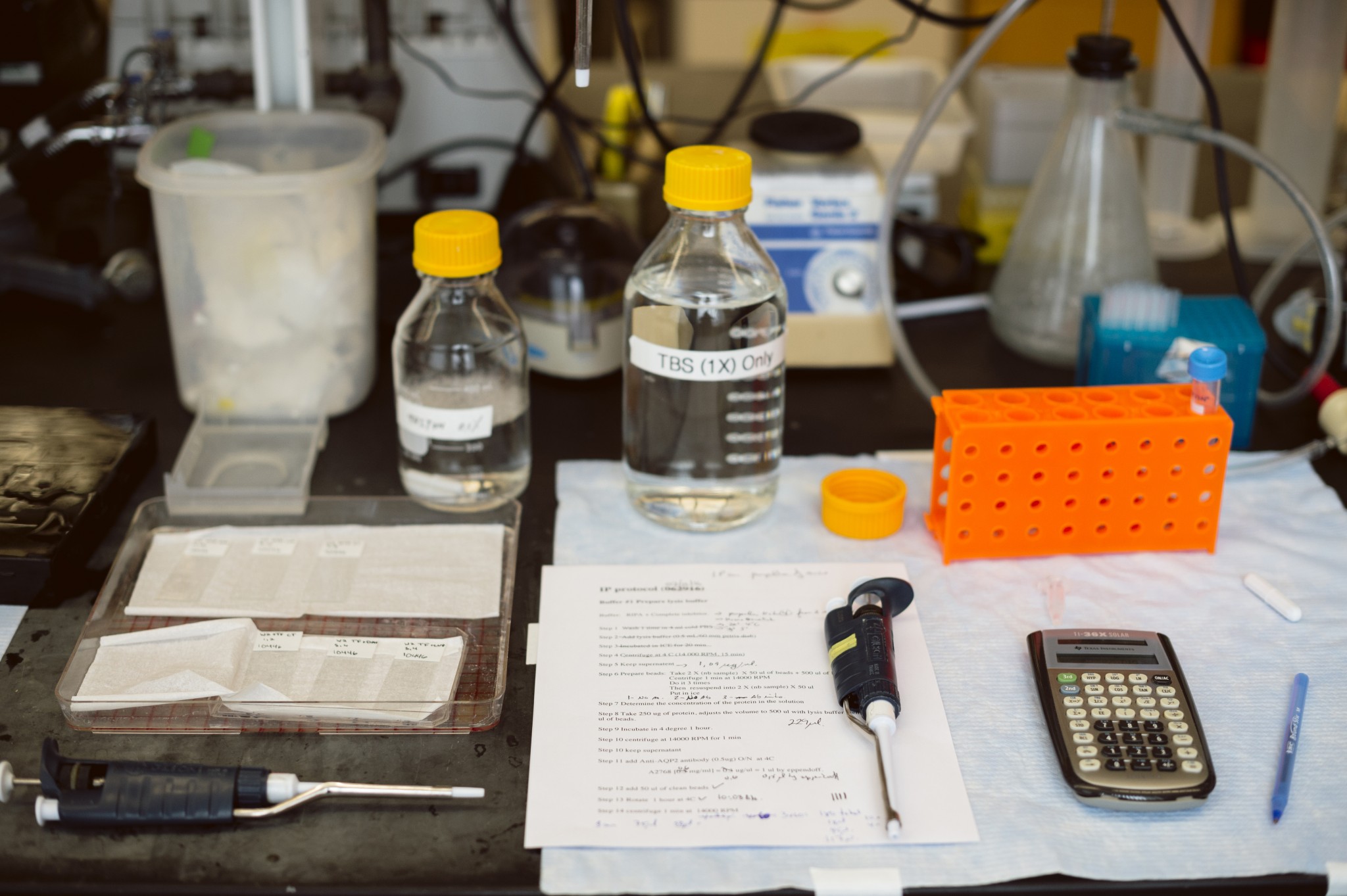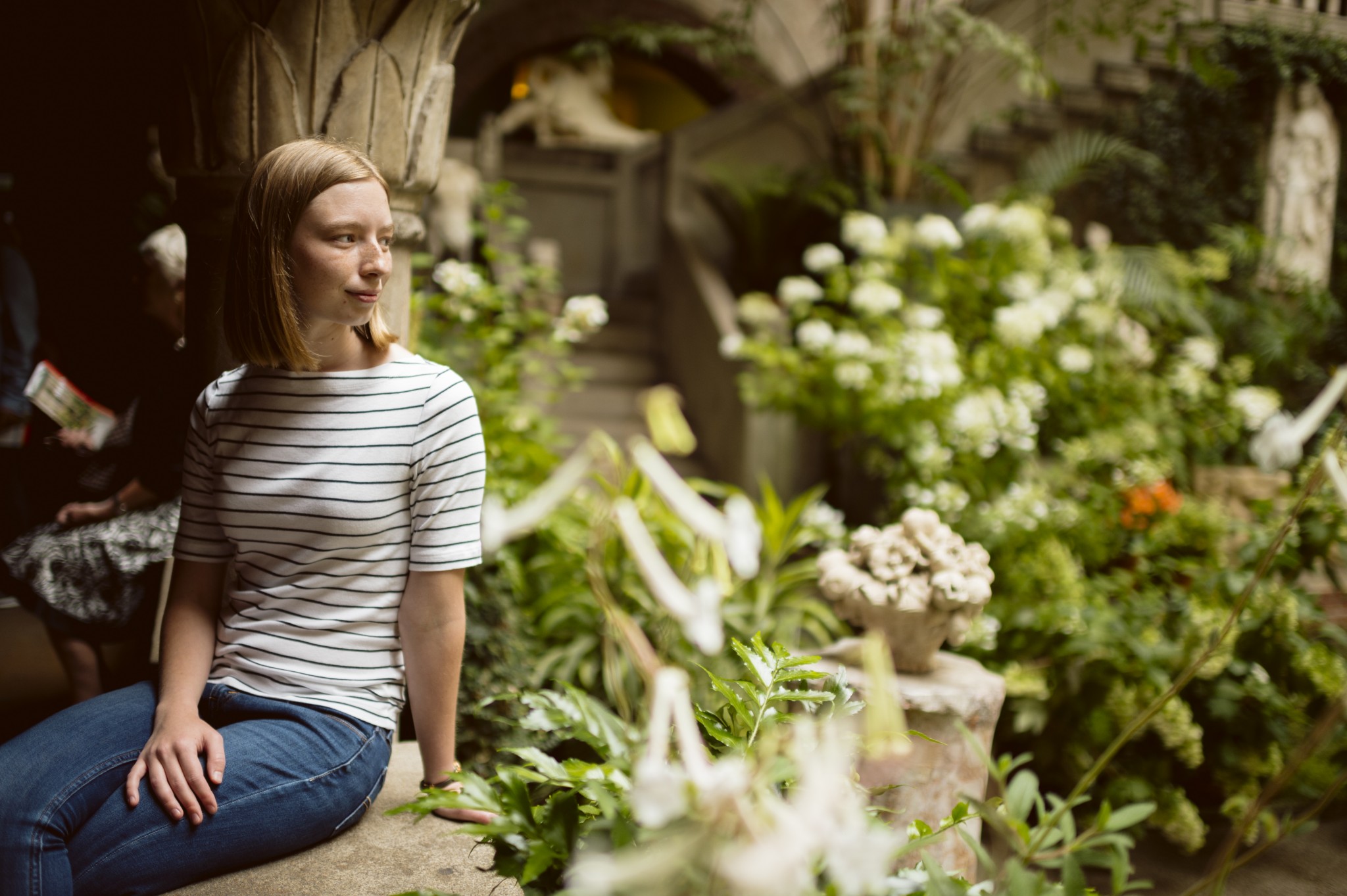 Abby Terlouw, an Honors College Fellow and biomedical engineering major from Bentonville, spent a busy summer studying kidney cells through a $750,000 microscope. She participated in the highly selective Harvard Summer Research Program in Kidney Medicine, a program supported by a grant from the National Institute of Diabetes and Digestive Disorders (NIDDK). This program spans the nephrology divisions of four Harvard affiliated hospitals and is run by Dr. Joseph Bonventre at Brigham and Women’s Hospital. Abby worked at Massachusetts General Hospital to chart the way the protein aquaporin-2 moves water through the kidney. This research is important for people suffering from diabetes insipidus, an irregularity that can be hereditary, incited by lithium in bipolar medications or even caused by a knock to the head. It stops the kidney from concentrating urine so people with this condition have to drink up to twelve liters of water a day to keep from getting dangerously dehydrated.
Abby Terlouw, an Honors College Fellow and biomedical engineering major from Bentonville, spent a busy summer studying kidney cells through a $750,000 microscope. She participated in the highly selective Harvard Summer Research Program in Kidney Medicine, a program supported by a grant from the National Institute of Diabetes and Digestive Disorders (NIDDK). This program spans the nephrology divisions of four Harvard affiliated hospitals and is run by Dr. Joseph Bonventre at Brigham and Women’s Hospital. Abby worked at Massachusetts General Hospital to chart the way the protein aquaporin-2 moves water through the kidney. This research is important for people suffering from diabetes insipidus, an irregularity that can be hereditary, incited by lithium in bipolar medications or even caused by a knock to the head. It stops the kidney from concentrating urine so people with this condition have to drink up to twelve liters of water a day to keep from getting dangerously dehydrated.
Abby hopes her research with Dr. Dennis Brown, a leading figure in the field of nephrology, will help find which drugs have the best effect on mobilizing aquaporin 2 (they already know that, as an unexpected side effect, Viagra can help). Abby plans to attend medical school after she graduates from the University of Arkansas, and is applying to top programs in Chicago, Boston, Michigan and Arkansas. She was one of four Harvard Summer Research Program students selected to present a poster at the American Society of Nephrology Conference in Chicago this November.

Abby spent a lot of her time staining thin slices of rat kidneys, a process that requires a lot of patience (hours of waiting) and trial and error.

Abby used both tissue samples and modified kidney cells for her experiments. Here she is feeding the stock of cells they use in the cell culture room. Usually they plate the cells on Friday, let them multiply over the weekend, and perform experiments on Monday.

Abby, shown here with Dr. Dennis Brown, had access to state-of-the-art equipment this summer. After the staining was complete, she took photos of the cells she wanted to examine.

Then she used advanced software to examine aquaporin 2. The microscope room has to remain cold and dark to keep the lasers from overheating.

Dr. Dennis Brown and Dr. Richard Bouley look at Abby’s results and share their expertise. Dr. Brown says he hopes she’ll become a nephrologist, “My prediction is that she’ll go a long way if she continues with this attitude. She’s shown great resourcefulness, independence, and courage as well. It’s not easy to come into a place as well-known as Harvard, because you don’t know who you’re going to meet in the corridor.”

With her free time, Abby explored the city of Boston — here she enjoys the bustle of Harvard Square. Abby’s on her own today, but she was often accompanied by other members of the program, including students from prestigious universities like Princeton, Rice, and Tufts. “It comes down to the people you’re working with,” she said. Abby had to pull out a map to show everyone where Arkansas was the first day but appreciated the diverse viewpoints: “One day there were fifteen people in the lunch room and I counted twelve different countries with four native English speakers. And as the only person from the South, I get to share my unique viewpoint too.”



